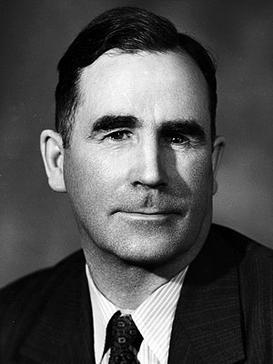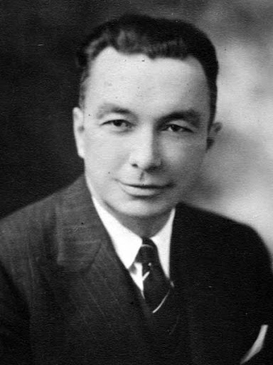The Progressive Party of Canada, formally the National Progressive Party, was a federal-level political party in Canada in the 1920s until 1930. It was linked with the provincial United Farmers parties in several provinces, and it spawned the Progressive Party of Saskatchewan, and the Progressive Party of Manitoba, which formed the government of that province. The Progressive Party was part of the farmers' political movement that included federal and provincial Progressive and United Farmers' parties.
There have been various groups in Canada that have nominated candidates under the label Labour Party or Independent Labour Party, or other variations from the 1870s until the 1960s. These were usually local or provincial groups using the Labour Party or Independent Labour Party name, backed by local labour councils made up of many union locals in a particular city, or individual trade unions. There was an attempt to create a national Canadian Labour Party in the late 1910s and in the 1920s, but these were only partly successful.

John Bracken was a Canadian agronomist and politician who was the 11th and longest-serving premier of Manitoba (1922–1943) and later the leader of the Progressive Conservative Party of Canada (1942–1948).

Douglas Lloyd Campbell was a Canadian politician in Manitoba. He served as the 13th premier of Manitoba from 1948 to 1958. He was a member of the Legislative Assembly of Manitoba for 47 years, longer than anyone in the province's history.

Frederick John (Fred) Dixon was a Manitoba politician, and was for several years the dominant figure in the province's mainstream labour and Henry George Single Tax Georgist movements. A proponent of proportional representation, he also served as an MLA in the Manitoba Legislature from 1914 to 1923.
Seymour James Farmer was a politician in Manitoba, Canada. He served as Winnipeg MLA from 1922 to 1949. During this time he also served as mayor of Winnipeg 1923-1924 and later as city councillor in the late 1920s and in the 1930s. He was the leader of the Manitoba Co-operative Commonwealth Federation from 1935 to 1947. He served as a cabinet minister in Manitoba's World War I coalition government.

Errick French Willis was a politician in Manitoba, Canada. He served as leader of the province's Conservative Party between 1936 and 1954, and was responsible for beginning and ending the party's alliance with the Liberal-Progressive Party. He also served as Manitoba's 15th Lieutenant Governor between 1960 and 1965.
The Manitoba Social Credit Party was a political party in the Canadian province of Manitoba. In its early years, it espoused the monetary reform theories of social credit.
The 1934 Ontario general election was the 19th general election held in the Province of Ontario, Canada. It was held on June 19, 1934, to elect the 19th Legislative Assembly of Ontario ("MLAs").

The 1959 Manitoba general election was held on May 14, 1959 to elect 57 members to the Legislative Assembly of Manitoba, Canada. It resulted in a majority victory for the incumbent Progressive Conservatives under the leadership of Premier Dufferin Roblin. It was the first time since the 1914 election that the PCs won an outright majority in the province, when they were led by Dufferin Roblin's grandfather, Sir Rodmond Roblin.
Charles Edwin Greenlay was a politician in Manitoba, Canada. He served in the Legislative Assembly of Manitoba as a from 1943 to 1959, and was a cabinet minister in the governments of Stuart Garson and Douglas Campbell.
Ivan Schultz was a politician in Manitoba, Canada. He served in the Legislative Assembly of Manitoba as a Liberal-Progressive from 1930 to 1955, and was a prominent cabinet minister in the governments of John Bracken, Stuart Garson and Douglas Campbell.
James O. McLenaghen was a politician in Manitoba, Canada. He served in the Legislative Assembly of Manitoba from 1927 until his death, and was a cabinet minister in the governments of John Bracken, Stuart Garson and Douglas Campbell.
The 1945 Manitoba general election was held on October 15, 1945 to elect Members of the Legislative Assembly of the Province of Manitoba, Canada. The election was a landslide majority government for the incumbent coalition government led by the Liberal-Progressive Party.
Joseph Wawrykow was a politician in Manitoba, Canada. He served in the Legislative Assembly of Manitoba from 1936 to 1945.
Skuli Sigfusson was a politician in Manitoba, Canada. He served in the Legislative Assembly of Manitoba on three occasions: from 1915 to 1920, 1922 to 1936, and 1941 to 1945.
The 1936 Manitoba general election was held July 27, 1936 to elect Members of the Legislative Assembly of the Province of Manitoba, Canada. The Liberal-Progressives won minority government in this election, taking 23 seats out of 55 and 35 percent of the vote.
Harold Frederick Lawrence was a politician in Manitoba, Canada. He served in the Legislative Assembly of Manitoba from 1932 to 1936.
The Manitoba Cooperative Commonwealth Federation existed from 1933 to 1961, and was the dominant socialist party in the province during its existence.
![Number of seats won by major parties at each election
.mw-parser-output figure[typeof="mw:File/Thumb"] .image-key>ol{margin-left:1.3em;margin-top:0}.mw-parser-output figure[typeof="mw:File/Thumb"] .image-key>ul{margin-top:0}.mw-parser-output figure[typeof="mw:File/Thumb"] .image-key li{page-break-inside:avoid;break-inside:avoid-column}@media(min-width:300px){.mw-parser-output figure[typeof="mw:File/Thumb"] .image-key,.mw-parser-output figure[typeof="mw:File/Thumb"] .image-key-wide{column-count:2}.mw-parser-output figure[typeof="mw:File/Thumb"] .image-key-narrow{column-count:1}}@media(min-width:450px){.mw-parser-output figure[typeof="mw:File/Thumb"] .image-key-wide{column-count:3}}
.mw-parser-output .plainlist ol,.mw-parser-output .plainlist ul{line-height:inherit;list-style:none;margin:0;padding:0}.mw-parser-output .plainlist ol li,.mw-parser-output .plainlist ul li{margin-bottom:0}
.mw-parser-output .legend{page-break-inside:avoid;break-inside:avoid-column}.mw-parser-output .legend-color{display:inline-block;min-width:1.25em;height:1.25em;line-height:1.25;margin:1px 0;text-align:center;border:1px solid black;background-color:transparent;color:black}.mw-parser-output .legend-text{}
Conservative/PC
CCF/NDP
Liberal
United Farmers
Social Credit
Other
Independent MB elections2.gif](http://upload.wikimedia.org/wikipedia/commons/thumb/8/8b/MB_elections2.gif/350px-MB_elections2.gif)






